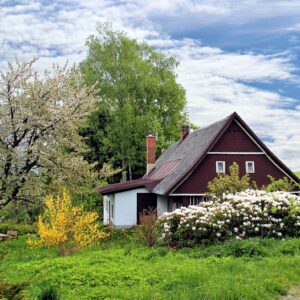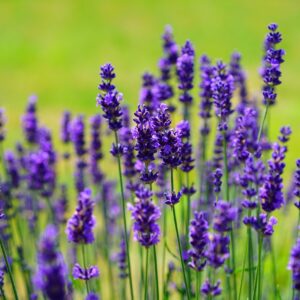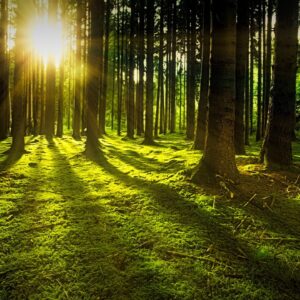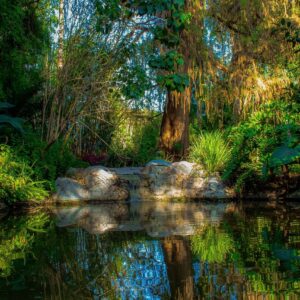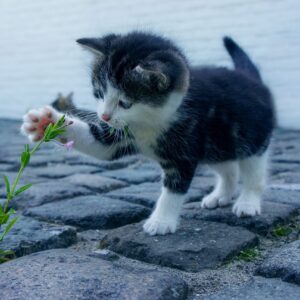Do you want to transform your garden into a haven for butterflies and bees?
Creating a butterfly and bee-friendly garden is not only a beautiful addition to your outdoor space, but it also plays a vital role in supporting these important pollinators.
By following a few simple steps, you can attract and sustain a diverse range of these fascinating creatures.
First and foremost, selecting the right plants is key. Choose a variety of flowers that provide nectar throughout the year, such as lavender, sunflowers, and coneflowers. These will serve as irresistible food sources for butterflies and bees.
Next, provide shelter and nesting areas by incorporating native plants and installing bee hotels or butterfly houses. These structures offer safe havens for these insects to rest and lay their eggs.
Additionally, it is crucial to avoid harmful pesticides and chemicals in your garden. Opt for natural pest control methods or use organic alternatives to protect your plants without harming pollinators.
Remember to create water sources, like shallow dishes or small ponds, where butterflies and bees can drink and cool off.
Lastly, maintaining a sustainable and healthy garden environment involves proper pruning, weeding, and regular monitoring for pests and diseases. By implementing these practices, you can create a flourishing and inviting space for butterflies and bees to thrive.
Let’s get started on transforming your garden into a haven for these important pollinators!
Selecting the Right Plants for Pollinators
When creating a butterfly and bee-friendly garden, it’s important to choose the right plants that will attract and nourish these pollinators.
Start by selecting a variety of flowering plants that bloom at different times throughout the year, ensuring a constant source of nectar.
Opt for native plants as they’ve co-evolved with local pollinators, making them more attractive and beneficial.
Plant a mix of colors to attract a diverse range of butterflies and bees.
Consider including plants with different flower shapes and sizes to accommodate various types of pollinators.
Avoid using pesticides or insecticides as they can harm these beneficial insects. Instead, opt for organic methods to control pests.
By carefully selecting the right plants, you can create a garden that not only adds beauty to your landscape but also provides a safe haven for butterflies and bees.
Providing Shelter and Nesting Areas
To attract more butterflies and bees, it’s important to incorporate areas where they can find shelter and build nests. You can create sheltered spots by planting dense shrubs or installing bee houses and butterfly boxes. Bees and butterflies need protection from extreme weather conditions, so planting shrubs like butterfly bush or azalea can provide them with a safe haven.
Additionally, you can provide nesting opportunities by leaving patches of bare ground or creating simple structures like a bee hotel. These structures provide bees and butterflies with a place to lay their eggs and raise their young. Remember to place the shelters and nesting areas in sunny spots, as butterflies and bees prefer warm and sunny conditions.
By creating these spaces, you will not only attract more pollinators but also provide them with essential resources for their survival.
Avoiding Harmful Pesticides and Chemicals
Using harmful pesticides and chemicals can have detrimental effects on the health and well-being of pollinators that we want to attract to our outdoor spaces. When creating a butterfly and bee-friendly garden, it’s crucial to avoid using these harmful substances. Instead, opt for natural alternatives to control pests and weeds.
For example, you can introduce beneficial insects like ladybugs and lacewings, which prey on harmful pests. Additionally, consider using organic insecticides made from plant extracts like neem oil or garlic spray. These options are effective in keeping pests at bay without harming pollinators.
Furthermore, practice integrated pest management techniques such as regularly inspecting plants for signs of pests and manually removing them. By avoiding harmful pesticides and chemicals, you can create a safe and thriving environment for butterflies, bees, and other pollinators.
Creating Water Sources for Butterflies and Bees
One great idea is to provide water sources for our fluttering friends. Butterflies and bees need water to survive and thrive, just like any other living creature.
You can easily create a water source in your garden by placing shallow dishes or bowls filled with water in various locations. Make sure to add some rocks or pebbles to provide a landing spot for the insects. You can also add floating plants or leaves to create a natural and inviting environment.
It’s important to keep the water clean and fresh by replacing it regularly to prevent the spread of diseases. By providing water sources, you’re not only helping butterflies and bees, but also creating a beautiful and welcoming garden for yourself.
Maintaining a Sustainable and Healthy Garden Environment
Maintaining a sustainable and healthy garden environment requires regular upkeep and attention to ensure the well-being of all the plants and creatures that call it home.
To create an environment that is welcoming to butterflies and bees, it’s important to follow a few simple guidelines. First, avoid using harmful pesticides and opt for natural alternatives instead. This will protect the beneficial insects and prevent any harm to the ecosystem.
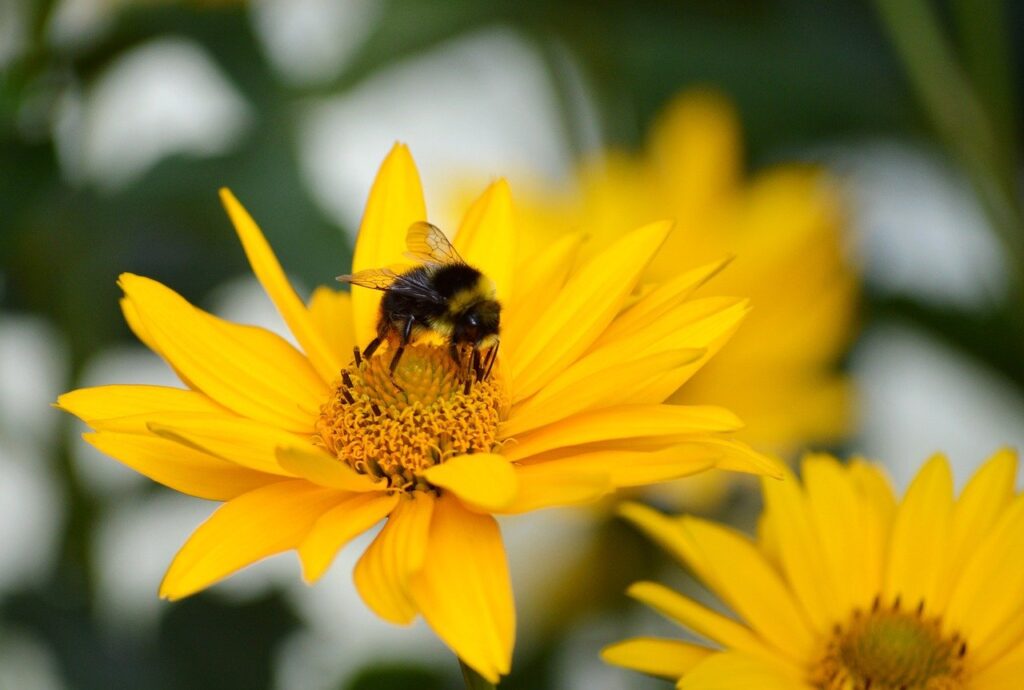
Second, regularly remove any weeds and dead plants to promote healthy growth and prevent the spread of diseases. Additionally, make sure that your garden has a variety of plants that bloom at different times of the year to provide a continuous food source for butterflies and bees.
Finally, conserve water by using drip irrigation systems and collecting rainwater. By following these steps, you can maintain a sustainable and thriving garden environment for butterflies and bees.
Conclusion
In conclusion, creating a butterfly and bee-friendly garden is a rewarding and important endeavor. By selecting the right plants, providing shelter and nesting areas, avoiding harmful chemicals, and creating water sources, you can attract and support these vital pollinators.
Remember to maintain a sustainable and healthy garden environment to ensure their continued presence. With a little effort and care, you can make a positive impact on the well-being of butterflies and bees, and contribute to the overall biodiversity of your garden.
